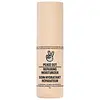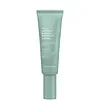What's inside
What's inside
 Key Ingredients
Key Ingredients

 Benefits
Benefits

 Ingredients Side-by-side
Ingredients Side-by-side

Water
Skin ConditioningNeopentyl Glycol Diheptanoate
EmollientGlycerin
HumectantPropanediol
SolventCoconut Alkanes
EmollientTriheptanoin
Skin ConditioningBrassica Glycerides
EmollientCetearyl Olivate
Coco-Caprylate/Caprate
EmollientHydrogenated Ethylhexyl Olivate
EmollientSorbitan Olivate
EmulsifyingBakuchiol
AntimicrobialNiacinamide
SmoothingPolymethylsilsesquioxane/Silica Crosspolymer
Squalane
EmollientCeramide EOP
Skin ConditioningCeramide NP
Skin ConditioningCeramide AP
Skin ConditioningUbiquinone
AntioxidantCannabis Sativa Seed Oil
EmollientPassiflora Edulis Seed Oil
EmollientMoringa Oleifera Seed Oil
EmollientRosa Canina Seed Oil
EmollientPavlova Lutheri Extract
Skin ConditioningSalix Alba Bark Extract
AstringentCholesterol
EmollientLauroyl Lysine
Skin ConditioningPhytosphingosine
Skin ConditioningSaccharomyces Ferment
Skin ConditioningCastor Oil/Ipdi Copolymer
Sodium Lauroyl Lactylate
EmulsifyingCaprylhydroxamic Acid
Dilinoleic Acid/Butanediol Copolymer
Trisodium Ethylenediamine Disuccinate
C12-15 Alkyl Benzoate
AntimicrobialCitric Acid
BufferingTocopheryl Acetate
AntioxidantCarbomer
Emulsion Stabilising1,2-Hexanediol
Skin ConditioningHydroxyethyl Acrylate/Sodium Acryloyldimethyl Taurate Copolymer
Emulsion StabilisingEthylhexylglycerin
Skin ConditioningPolysorbate 60
EmulsifyingSorbitan Isostearate
EmulsifyingPhenoxyethanol
PreservativeWater, Neopentyl Glycol Diheptanoate, Glycerin, Propanediol, Coconut Alkanes, Triheptanoin, Brassica Glycerides, Cetearyl Olivate, Coco-Caprylate/Caprate, Hydrogenated Ethylhexyl Olivate, Sorbitan Olivate, Bakuchiol, Niacinamide, Polymethylsilsesquioxane/Silica Crosspolymer, Squalane, Ceramide EOP, Ceramide NP, Ceramide AP, Ubiquinone, Cannabis Sativa Seed Oil, Passiflora Edulis Seed Oil, Moringa Oleifera Seed Oil, Rosa Canina Seed Oil, Pavlova Lutheri Extract, Salix Alba Bark Extract, Cholesterol, Lauroyl Lysine, Phytosphingosine, Saccharomyces Ferment, Castor Oil/Ipdi Copolymer, Sodium Lauroyl Lactylate, Caprylhydroxamic Acid, Dilinoleic Acid/Butanediol Copolymer, Trisodium Ethylenediamine Disuccinate, C12-15 Alkyl Benzoate, Citric Acid, Tocopheryl Acetate, Carbomer, 1,2-Hexanediol, Hydroxyethyl Acrylate/Sodium Acryloyldimethyl Taurate Copolymer, Ethylhexylglycerin, Polysorbate 60, Sorbitan Isostearate, Phenoxyethanol
Water
Skin ConditioningGlycerin
HumectantCaprylic/Capric Triglyceride
MaskingLactobacillus Ferment
Skin ConditioningAcrylamide/Sodium Acryloyldimethyltaurate Copolymer
Emulsion StabilisingAlbizia Julibrissin Bark Extract
MaskingCalophyllum Inophyllum Seed Oil
AntimicrobialNiacinamide
SmoothingOctadecenedioic Acid
EmulsifyingRosa Canina Seed Oil
EmollientSimmondsia Chinensis Seed Oil
EmollientSqualane
EmollientRibose
HumectantCentella Asiatica Leaf Extract
Skin ConditioningGlycyrrhiza Glabra Root Extract
BleachingSaccharomyces/Xylinum/Black Tea Ferment
Skin ConditioningMel
EmollientZinc PCA
HumectantCamellia Sinensis Leaf Extract
AntimicrobialCaffeine
Skin ConditioningAllantoin
Skin ConditioningSuperoxide Dismutase
AntioxidantPlantago Lanceolata Leaf Extract
AntimicrobialMoringa Oleifera Seed Extract
Skin ConditioningCentella Asiatica Meristem Cell Culture
AntioxidantSyringa Vulgaris Leaf Cell Culture Extract
Skin ConditioningPalmitoyl Tripeptide-8
Skin ConditioningPhospholipids
Skin ConditioningSodium Hyaluronate
HumectantMarrubium Vulgare Meristem Cell Culture
Skin ProtectingHydrolyzed Jojoba Esters
Skin ConditioningGlutamylamidoethyl Imidazole
Bisabolol
MaskingCeramide NP
Skin ConditioningHyaluronic Acid
HumectantSphingolipids
EmollientTocopherol
AntioxidantRosmarinyl Glucoside
AntioxidantCaffeyl Glucoside
AntioxidantGallyl Glucoside
AntioxidantTetrahydrodiferuloylmethane
AntioxidantTetrahydrodemethoxydiferuloylmethane
AntioxidantTetrahydrobisdemethoxydiferuloylmethane
AntioxidantMaltodextrin
AbsorbentDextran
Hydroxyethylcellulose
Emulsion StabilisingCetearyl Olivate
Sorbitan Olivate
EmulsifyingXanthan Gum
EmulsifyingIsosorbide Dicaprylate
Skin ConditioningWater, Glycerin, Caprylic/Capric Triglyceride, Lactobacillus Ferment, Acrylamide/Sodium Acryloyldimethyltaurate Copolymer, Albizia Julibrissin Bark Extract, Calophyllum Inophyllum Seed Oil, Niacinamide, Octadecenedioic Acid, Rosa Canina Seed Oil, Simmondsia Chinensis Seed Oil, Squalane, Ribose, Centella Asiatica Leaf Extract, Glycyrrhiza Glabra Root Extract, Saccharomyces/Xylinum/Black Tea Ferment, Mel, Zinc PCA, Camellia Sinensis Leaf Extract, Caffeine, Allantoin, Superoxide Dismutase, Plantago Lanceolata Leaf Extract, Moringa Oleifera Seed Extract, Centella Asiatica Meristem Cell Culture, Syringa Vulgaris Leaf Cell Culture Extract, Palmitoyl Tripeptide-8, Phospholipids, Sodium Hyaluronate, Marrubium Vulgare Meristem Cell Culture, Hydrolyzed Jojoba Esters, Glutamylamidoethyl Imidazole, Bisabolol, Ceramide NP, Hyaluronic Acid, Sphingolipids, Tocopherol, Rosmarinyl Glucoside, Caffeyl Glucoside, Gallyl Glucoside, Tetrahydrodiferuloylmethane, Tetrahydrodemethoxydiferuloylmethane, Tetrahydrobisdemethoxydiferuloylmethane, Maltodextrin, Dextran, Hydroxyethylcellulose, Cetearyl Olivate, Sorbitan Olivate, Xanthan Gum, Isosorbide Dicaprylate
 Reviews
Reviews

Ingredients Explained
These ingredients are found in both products.
Ingredients higher up in an ingredient list are typically present in a larger amount.
Ceramide NP is a type of ceramide and formally known as ceramide 3.
Ceramides are intercellular lipids naturally found in our skin that bonds dead skin cells together to create a barrier. They are known for their ability to hold water and thus are a great ingredient for dry skin.
Ceramides are an important building block for our skin barrier. A stronger barrier helps the skin look more firm and hydrated. By bolstering the skin ceramides act as a barrier against irritating ingredients. This can help with inflammation as well.
If you would like to eat ceramides, sweet potatoes contain a small amount.
Read more about other common types of ceramides here:
Ceramide AP
Ceramide EOP
Cetearyl Olivate is an emulsifier and texture enhancer. It is derived from the fatty acids of olive oil and Cetearyl alcohol, and is biodegradable.
As an emulsifier, it is used to prevent oils and waters from separating. It can also
Manufacturers use the name Olivem 1000. This ingredient has been found to preserve the natural microbiome of skin. Having a healthy microbiome helps keep our skin healthy and protects against harmful bacteria. This ingredient is grouped with Sorbitan Olivate under the name Olivem 1000.
Learn more about Cetearyl OlivateGlycerin is already naturally found in your skin. It helps moisturize and protect your skin.
A study from 2016 found glycerin to be more effective as a humectant than AHAs and hyaluronic acid.
As a humectant, it helps the skin stay hydrated by pulling moisture to your skin. The low molecular weight of glycerin allows it to pull moisture into the deeper layers of your skin.
Hydrated skin improves your skin barrier; Your skin barrier helps protect against irritants and bacteria.
Glycerin has also been found to have antimicrobial and antiviral properties. Due to these properties, glycerin is often used in wound and burn treatments.
In cosmetics, glycerin is usually derived from plants such as soybean or palm. However, it can also be sourced from animals, such as tallow or animal fat.
This ingredient is organic, colorless, odorless, and non-toxic.
Glycerin is the name for this ingredient in American English. British English uses Glycerol/Glycerine.
Learn more about GlycerinNiacinamide is a multitasking form of vitamin B3 that strengthens the skin barrier, reduces pores and dark spots, regulates oil, and improves signs of aging.
And the best part? It's gentle and well-tolerated by most skin types, including sensitive and reactive skin.
You might have heard of "niacin flush", or the reddening of skin that causes itchiness. Niacinamide has not been found to cause this.
In very rare cases, some individuals may not be able to tolerate niacinamide at all or experience an allergic reaction to it.
If you are experiencing flaking, irritation, and dryness with this ingredient, be sure to double check all your products as this ingredient can be found in all categories of skincare.
When incorporating niacinamide into your routine, look out for concentration amounts. Typically, 5% niacinamide provides benefits such as fading dark spots. However, if you have sensitive skin, it is better to begin with a smaller concentration.
When you apply niacinamide to your skin, your body converts it into nicotinamide adenine dinucleotide (NAD). NAD is an essential coenzyme that is already found in your cells as "fuel" and powers countless biological processes.
In your skin, NAD helps repair cell damage, produce new healthy cells, support collagen production, strengthen the skin barrier, and fight environmental stressors (like UV and pollution).
Our natural NAD levels start to decline with age, leading to slower skin repair, visible aging, and a weaker skin barrier. By providing your skin niacinamide, you're recharging your skin's NAD levels. This leads to stronger, healthier, and younger looking skin.
Another name for vitamin B3 is nicotinamide. This vitamin is water-soluble and our bodies don't store it. We obtain Vitamin B3 from either food or skincare. Meat, fish, wheat, yeast, and leafy greens contain vitamin B3.
The type of niacinamide used in skincare is synthetically created.
Learn more about NiacinamideRosa Canina Seed Oil comes from the seeds of the dog-rose plant. It is an emollient.
Emollients help hydrate your skin by trapping moisture in. They create a thin film on the skin to prevent moisture from escaping.
Rosa Canina Seed Oil contains phenolic compounds, carotenoids, Vitamin C, linoleic acid, and other fatty acids.
Due to the fatty acid content, this ingredient may not be fungal-acne safe.
Learn more about Rosa Canina Seed OilSorbitan Olivate is created from the fatty acids in olive oil and sorbitol.
This ingredient is an oil in water emulsifier. It helps stabilize a product by preventing oils and waters from separating. Sorbitan Olivate also helps hydrate the skin.
Manufacturers sell sorbitan olivate under the name OliveM 1000. OliveM 1000 a multifunctional ingredient. It is self-emulsifying. According to a manufacturer, OliveM 1000 does not disrupt natural skin biome.
Due to its olive oil base, this ingredient may not be fungal-acne safe.
Learn more about Sorbitan OlivateSqualane is an emollient that helps the skin hold onto moisture. It's an oily liquid that occurs naturally in certain types of fish and plant oils.
Because squalane boosts hydration in the skin, it also comes with plenty of benefits: it is an antioxidant and can help fight free radicals and skin damage. Squalane is also found to have a detoxifying effect when applied.
Squalane comes from squalene, which occurs naturally within the sebum of our skin. It is one of the oils our skin produces to keep itself hydrated. Squalane is the hydrogenated version of squalene and has a longer shelf life.
Research shows that squalane is non-irritating (even at 100% concentration).
In general, it's a fantastic ingredient. It does a great job at hydrating the skin, and it's suitable for those with sensitive skin.
The source of squalane may impact malassezia / fungal acne. This is because olive oil derived squalane can contain impurities such as fatty acids and plant waxes. Sugarcane derived squalane is recommended for anyone with malassezia concerns.
Is squalane vegan?
This depends on the source. Squalane can be derived from both plants and animals. Most squalane used in skincare comes from plants.
Please note: the source of squalane is only known if disclosed by the brand. We recommend reaching out to the brand if you have any questions about their squalane.
Read more about squalene with an "e".
Is squalane an oil?
Squalane is often called an oil, but it’s technically not; it’s a hydrocarbon, meaning it’s only made of carbon and hydrogen, unlike true oils which are triglycerides made of fatty acids and glycerol.
The term “oil-free” isn’t regulated, so companies can define it however they want. Some exclude all oils, while others just avoid mineral oil or comedogenic oils.
While some people avoid oils thinking they cause breakouts, the right kind of oil (or oil-like ingredient like squalane) can actually help balance and hydrate your skin. It’s worth testing out simple oils or squalane to see what works best for your skin.
Learn more about SqualaneWater. It's the most common cosmetic ingredient of all. You'll usually see it at the top of ingredient lists, meaning that it makes up the largest part of the product.
So why is it so popular? Water most often acts as a solvent - this means that it helps dissolve other ingredients into the formulation.
You'll also recognize water as that liquid we all need to stay alive. If you see this, drink a glass of water. Stay hydrated!
Learn more about Water